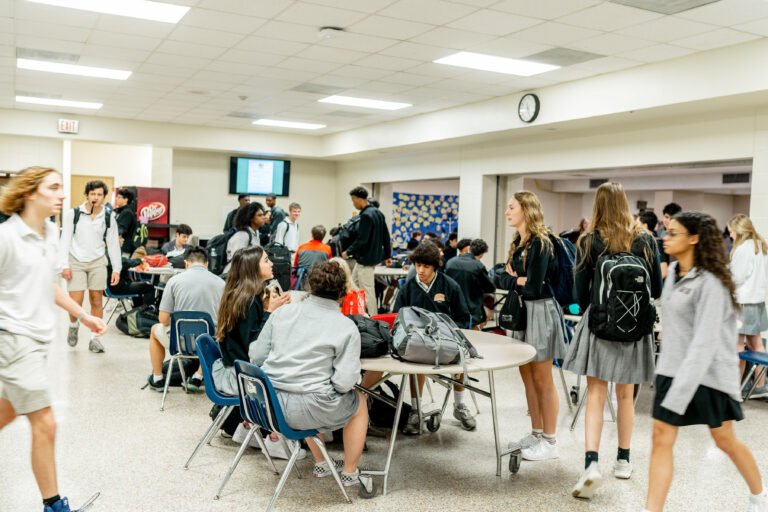From Monday to Friday: Exploring the Typical School Week for Students in the USA
The typical school week in the USA is structured around a five-day schedule, with most schools operating from Monday to Friday. The school day typically starts in the morning and ends in the afternoon, with students attending a variety of classes and participating in extracurricular activities. The school week is an important part of a student’s life, as it provides them with the opportunity to learn, socialize, and develop important skills that will benefit them in the future. The typical school week in the USA is designed to provide students with a well-rounded education and prepare them for success in their academic and personal lives.
The Structure of a Typical School Day
A typical school day in the USA usually begins with students arriving at school in the morning and attending their first class. The school day is divided into several periods, with students moving from one class to another throughout the day. Each class typically lasts for around 45-50 minutes, with short breaks in between to allow students to transition to their next class. The school day usually ends in the afternoon, with students either heading home or participating in extracurricular activities or after-school programs. The structure of a typical school day is designed to provide students with a well-rounded education and allow them to engage in a variety of subjects and activities.
In addition to academic classes, many schools also incorporate time for physical education, art, music, and other enrichment activities into the school day. This allows students to explore their interests and develop important skills outside of the traditional classroom setting. The structure of a typical school day is designed to provide students with a balanced and comprehensive education that prepares them for success in their academic and personal lives.
Extracurricular Activities and After-School Programs
Extracurricular activities and after-school programs play a significant role in the lives of students in the USThese activities provide students with the opportunity to explore their interests, develop new skills, and socialize with their peers outside of the traditional classroom setting. Many schools offer a wide range of extracurricular activities, including sports teams, academic clubs, music ensembles, and community service organizations. After-school programs may also include tutoring, homework help, and enrichment activities that support students’ academic and personal development.
Participating in extracurricular activities and after-school programs can have numerous benefits for students. These activities can help students develop important skills such as teamwork, leadership, time management, and communication. They also provide students with opportunities to pursue their passions and interests, which can contribute to their overall well-being and sense of fulfillment. Additionally, extracurricular activities and after-school programs can help students build strong relationships with their peers and mentors, creating a sense of community and support within the school environment.
The Role of Homework and Study Time
Homework and study time are important components of the typical school week in the USAfter the school day ends, many students are expected to complete homework assignments and study for upcoming tests or exams. Homework serves as a way for students to reinforce what they have learned in class, practice important skills, and prepare for future lessons. Study time allows students to review material, ask questions, and seek additional support from teachers or peers.
The role of homework and study time can vary depending on the grade level and individual school policies. Some schools may have specific guidelines for the amount of homework assigned each night, while others may provide more flexibility for students to manage their workload. Regardless of the specific requirements, homework and study time are essential for students to succeed academically and develop important study habits that will benefit them throughout their lives.
Lunch and Break Times
Lunch and break times are an important part of the typical school day in the USThese periods provide students with the opportunity to refuel, socialize with their peers, and take a break from their academic responsibilities. Many schools offer a variety of options for lunch, including hot meals, sandwiches, salads, and snacks. Some schools also provide free or reduced-price meals for students who qualify based on their family’s income.
In addition to lunchtime, students typically have short breaks between classes or during recess periods throughout the day. These breaks allow students to stretch their legs, socialize with friends, and recharge before returning to their academic responsibilities. Lunch and break times are an important part of the school day, as they provide students with opportunities to relax and recharge before continuing with their studies.
Special Events and Assemblies
Special events and assemblies are an integral part of the school experience in the USThese events may include guest speakers, performances, celebrations, and educational presentations that enhance the overall learning environment. Special events and assemblies provide students with opportunities to learn about new topics, engage with their peers, and celebrate achievements within the school community.
Many schools also hold special events throughout the year to celebrate holidays, cultural traditions, and important milestones. These events may include performances, art exhibits, or community service projects that bring students together to celebrate diversity and promote unity within the school community. Special events and assemblies are an important part of the school experience, as they provide students with opportunities to learn outside of the traditional classroom setting and engage with their peers in meaningful ways.
Challenges and Opportunities for Students
While the typical school week in the USA offers numerous opportunities for students to learn and grow, it also presents challenges that students must navigate. Balancing academic responsibilities with extracurricular activities, after-school programs, and personal commitments can be challenging for many students. Additionally, managing homework assignments, study time, and social obligations can require strong time management skills and self-discipline.
Despite these challenges, the typical school week in the USA also presents numerous opportunities for students to thrive. Engaging in extracurricular activities can help students develop important skills such as leadership, teamwork, and communication. Participating in after-school programs can provide students with additional support and resources to succeed academically. Special events and assemblies can broaden students’ perspectives and expose them to new ideas and experiences.
Read Also: Do PhD Students Get Paid While in School in the USA?
Conclusion
The typical school week in the USA is designed to provide students with a well-rounded education that prepares them for success in their academic and personal lives. From the structure of a typical school day to extracurricular activities, homework, lunchtime, special events, and assemblies, the school week offers numerous opportunities for students to learn, grow, and thrive. While there are challenges that students must navigate, there are also ample opportunities for them to develop important skills, pursue their passions, and build strong relationships within the school community.







